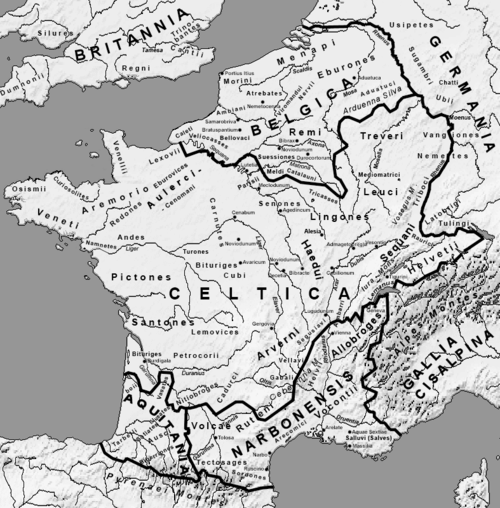The Atuatuci (or Aduatuci) were a Gallic-Germanic tribe, [1] [2] dwelling in the eastern part of modern-day Belgium during the Iron Age. [1]
Contents
- Name
- Attestations
- Etymology
- Geography
- Settlement
- History
- Origin
- Gallic Wars
- Roman period
- See also
- References
- Footnotes
- Citations
- Bibliography
- Primary sources
- External links
They fought the Roman armies of Julius Caesar during the Gallic Wars (58–50 BC). In the Battle of the Sabis (57 BC), the Atuatuci sent troops to assist their Belgic neighbours, the Nervii, Atrebates and Viromandui, but were too late to avoid an eventual Roman victory. After they withdrew to their oppidum (fortress), the Atuatuci were later defeated by the Romans during the siege of the Atuatuci (57 BC). According to Caesar, 4,000 of the Atuatici perished in the seizure of their stronghold, and 53,000 of them were reduced to slavery. Several years later in 54 BC the Atuatuci suffered further retribution when they were involved with their neighbours in a failed rebellion against the Romans. Following the devastation of the tribe, which left only a number of small groups, the Atuatuci disappeared from historical records and likely assimilated into neighbouring tribes.



